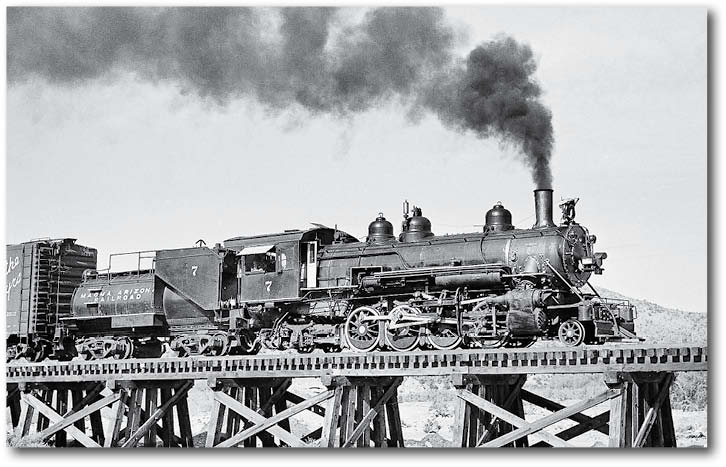Pinal Nugget
In early 1914 the Magma Copper Company after studying different methods for transporting copper concentrate to the new smelter in Hayden decided that hauling by railroad would be the most economical. The mine had been hauling concentrate by wagon to Webster located on the Southern Pacific Railroad line. The ore would be transferred to the Phoenix and Eastern Railroad where it would then be hauled to Hayden. Webster which would later become known as Magma Junction and then Magma was 31 miles from Superior. Hauling by wagon required a team of between 20 and 32 mules pulling three ore wagons and cost the company $10 a ton.
A young engineer, Edward Dentzer from Pennsylvania had convinced Magma Copper that a narrow gauge railroad would be the most economical means of transportation. On Oct. 20, 1914 the Magma-Arizona Railroad Company (MARCo) was officially incorporated. The first board of directors was W.L. Browning, manager of the Magma mine, E.H. Lundquist, superintendent, W.C. Holbarn, I.A. Ehinger and J.A. Garrott. The contract for the railroad line was awarded to the MacArthur Brothers Company. Dentzer would become superintendent of the railroad. Before he retired in 1944 he would be promoted to general manager, director and vice-president of the Magma-Arizona Railroad Company.
Construction at Webster began in November of 1914. The rail line would be completed to the concentrator near Superior in April 1915. An article in the Arizona Republican in June 1915 reported that the shipping costs had been lowered to $3.50 a ton with the use of the train. The train used a saddle tank steam locomotive to haul concentrate, supplies, freight and passengers. For passenger service a large car designed to carry eight passengers and baggage was purchased. In 1916 the cost of traveling from Webster to Superior was $2 one way or $3.50 round trip. The railroad would later transport cattle from local ranches to market. A spur and loading dock was installed near the now ghost town of Reymert so the mine there could ship their ore by rail. In 1916 the tax valuation assessed by the state was $213,890 or $7,300 a mile.
In 1920 the mine in Superior had increased in size and production to the point that Magma Copper Company made a decision to build their own smelter. In order to build the smelter a large amount of steel would have to be shipped to Superior. The narrow gauge railroad could not handle the heavy weight and amount of steel needed. It was decided that a standard size track be built. Construction on a line next to and running parallel to the small gauge line began in late 1921. The small gauge line was kept open to allow hauling of ore to continue while the other line was being built. The Toohy Brothers Construction Company built the new line. In 1923 the standard gauge line was completed and the old line was junked. The smelter would begin operating on March 31, 1924.
New locomotives, larger ore cars and equipment were purchased. Passenger and mail transportation would continue until 1938 when a better road between Mesa and Superior was completed allowing automobiles to take over. When diesel powered locomotives arrived in Arizona, Magma began phasing out the steam engines. The last steam engines, engine #5 and #7 were retired in 1967. Old Engine Number 5 appeared in the motion picture epic “How the West was Won” in 1962. Some scenes were shot around Superior.
In 1996 Broken Hills Proprietors (BHP) purchased the Magma Copper Company properties including the railroad. The operations of the railroad ceased in 1997. Resolution Copper Mining, LLC now owns the railroad and mine properties.
On Oct. 20, 2014, the Magma-Arizona Railroad Company marked its 100th anniversary of incorporation. The original Magma Arizona engine number 6 is on display at the McCormick-Stillman Railroad Park in Scottsdale.


